10 Products that I leave on the shelf
In DIY stores across the land, there are great products for sale……but amongst these are an equally large number of items that I really don’t think help the DIY cause in any shape or form. My top 10 (or rather bottom 10!) listed below are products that I find to be generally unnecessary, or trying to provide a ‘quick fix’ when the tried and tested option is for me, so much better. I’m not trying to single out manufacturers, as with those featured below, I will often sing their praises in other articles, with different products in their ‘catalogues’. However there really is some stuff that I wish they wouldn’t produce, and that I’d advise you to leave on the shelf.
1. Dulux Paint Pod
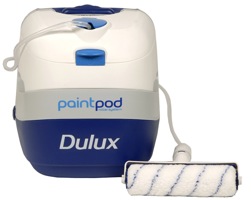
Some people love them, but I’d just keep to good quality roller equipment.
There are indeed many positive reviews out there about the Dulux Paint Pod, but there’s also a lot of bad ones, which would be the group that I’d be adding to.
Arguably, the Paint Pod system requires more coats than using a standard roller, you have a limited colour palette to choose from, malfunctions can be an issue, and I don’t really ‘get’ that it’s a timesaver, or labour-saving device.
One of the main sales points of a Paint Pod is that you never have to bend down, but clearly you do – every time you paint the lower levels of a wall! With a roller and extension pole, you just position the roller tray in front of you, stand upright, load the roller, and roll the top and bottom of the walls with no bending required! You can also paint the ceiling without getting on steps, which you clearly have to to with the Paint Pod. When using a roller with extension pole, yes, you do need to get on the steps to cut in around the edges, but you also have to do that with the Paint Pod system!
Sorry Dulux, I love so much of you gear, but I think people should leave the Paint Pods on the shop shelves, as otherwise, after limited use, they’re probably just going to end up on shelves in people’s sheds across the land.
2. One-coat paint
This is simple. In 25 years plus of painting thousands upon thousands of walls, doors, windows, and any other feature, item, or object in a home, whether inside or out……….I’ve never, ever, found a one-coat paint that does the job to my satisfaction, in terms of both coverage and/or performance.
3. No Sanding Filler
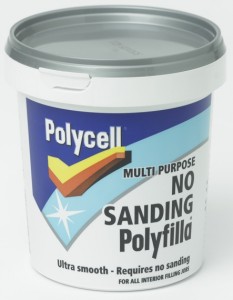
Fine for filling holes, but I’ll still be using sandpaper.
There is indeed a type of filler in the market that requires no sanding, but I tend to call ‘it’ a good plasterer with Multi-Finish plaster when covering an entire wall. I’m sorry, but all other ‘No Sanding Fillers’ will never in my view, not require a little bit of sanding to provide the best finish.
Without ‘blowing my own trumpet’ too much, I’d say I’m about as good as it gets when filling any surface for decoration, and if there was a Premier League for filling, I’d be top half of the table, and pushing for a Champions League spot most years (apologies to non-footballing readers for this analogy).
However, I can categorically say that I’ve never used any type of filler (other than caulk which you can’t sand), without the need for at least a brief pass of the sandpaper over it prior to further decoration. I’m sorry manufacturers, but the basic filling products available are for me, still the best, and most cost effective options.
4. Cheap screws
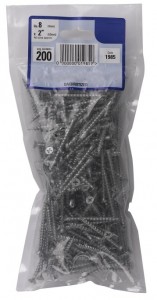
‘Cheap’ screws – avoid the misery and spend just a little bit more.
One thing that can bring the toughest pro, or DIYer, to their knees is trying to make decent fixings with cheap screws. The ‘butter soft’, often shiny silver, unbranded bags of ‘cheap’ screws (which even more annoyingly are often expensive!) can turn any sort of project into a miserable, morale-sapping experience.
Always go for branded options such as Reisser, Wurth, Spax, and Screwfix Turbo Golds. Yes, they may cost a little more, but they ensure you can actually do the job you set out to do! Cheap screws will generally result in cam-out and stripping the head i.e. your screwdriver bit slips in the screwhead recess and destroys it because the metal is so soft. Then your screwdriver bit just spins and spins as there is no longer any grip.
The other amazing thing about ‘cheap’ modern screws is that the force of an electric screwdriver when driving it into place will regularly actually snap the screw. I can never remember this happening, even 15 years ago, but nowadays with so many cheap imports it seems to happen all the time. So I really do advise to pay a little extra, in order to save your sanity.
5. Grout Pens

Nice idea, but doesn’t solve the problem.
I tend to think of a grout pen as a ‘papering over the cracks’ product. You literally use it to colour in your old grout to give it a cleaner, whiter look.
To begin with, discoloured and/or mouldy grout generally means it’s getting past its ‘sell-by’ date and is probably losing its water resistant properties.You need to clean the grout down thoroughly before using the pen, which to do properly is a pretty labour intensive process in itself, and then painting it with the pen, will again take time. Admittedly, this process will be much quicker than regrouting, but I still argue that you really are better off going for the regrouting option as the chances are that if your grout is in poor condition, water has started to penetrate behind the tiles which will lead to much bigger problems in the long run.
So Grout Pens are are a great idea, but I think they just cover a problem that will gradually get much worse.
6. Wallpaper Stripper
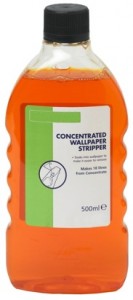
It works to an extent, but is it really that helpful?!
I don’t hate this product, but I just don’t see any need for it.
I’ve always been a firm believer in using a wallpaper steam stripper for removing wallpaper from your walls as for me, it’s the quickest and most efficient option.
If you haven’t got steam stripper, then soaking the paper with warm water and scraping it off with a scraper will certainly do the job – in fact many decorators don’t like the machine option and still prefer the soaking technique. Liquid wallpaper stripper is meant to help out the soaking technique, but unless I’ve tried out some pretty inferior products, it really doesn’t seem to speed things up that much!
Therefore, I’d always opt for a wallpaper steam stripper, as the liquid option is not effective enough for my needs.
7. ‘Easy to use’ sealant tubes

All-in-one just isn’t for me!
I’m sure these are manufactured with the best intentions but quite frankly, applying sealants and particularly silicone sealant is a tricky but achievable skill, and these ‘easy-to-use’ all-in-one options seem to me, to make the job a whole lot harder.
The traditional method, with a standard cartridge gun, involves inserting a tube of your chosen sealant, grab-adhesive, or caulk, into the gun before squeezing it out the nozzle as required. It gives the best possible result in my view as you have good control of expelling the product along the required gap or surface.
With the all-in-one options, I just don’t get the necessary control of the sealant as it comes out the tube, which inevitably leads to a pretty messy job.
So, I’d always advise going for the separate cartridge gun, and sealant tube option. It’s worked well for many, many years, and it really isn’t a system that I think needs reinventing.
8. Cut-price solid timber doors
I think the lesson here is that just because you see a solid wood door at a very attractive price, the fact that it’s solid wood has no link to whether it’s a quality product, or indeed provide any assurance that it’s going to last. Some doors I see in the DIY outlets I just find too ‘cheap’ on a number of levels. They’re often warped, poorly jointed, and full of knots, none of which are ideal factors when you come to hanging and decorating the doors, and all of which don’t provide much confidence in how long the doors will actually last.
Yes, we all have budgets, but I’d urge anyone who is tempted to buy a solid door at an unbelievably cheap price to remember the adage that if something is ‘too good to be true’, then it probably is!
9. Adhesive and grout
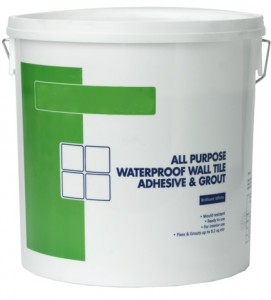
Adhesive and grout – I’d stick to separate products if I were you.
I have deep suspicions with products that have a two-for-one capability, as I always feel that using the same material to do two separate jobs means that there will have to be compromises made in the product formulation somewhere. One of my least favourite products that fits into this bracket is all-in-one adhesive and grout.
Now, I don’t doubt that there are success stories with this mixture, and in ‘non-wet’ areas such as kitchen splashbacks, you could perhaps get a reasonable result, but although I’d never use it, I recommend that you never use it in bathrooms and/or with large format tiles as it really won’t be suitable on either the sticking, or water-repellent front.
With all tile adhesive and grout, it’s really best to buy separate products, suitable for the particular surface you’re tiling, as well as the particular tiles you are using. Always do plenty of adhesive and grout research to avoid potentially very costly errors.
10. Paint pads
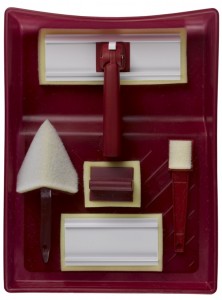
Paint pads – if they work for you – great!….but it’s rollers all the way for me!
Now I know I’m on slightly shaky ground here as there are a lot of DIY enthusiasts who love paint pads, but I’m sorry, I just don’t find them a better option to using paint rollers.
I find you always need more coats with a paint pad in comparison to a roller. They also seem to struggle with walls that are the slightest bit uneven, and I find it all too easy to ‘smear’ the paint, rather than apply it evenly, and the pads themselves don’t seem to have much of a reuse life expectancy.
I also tend to wonder why they’ve never taken over the shelves in our local DIY outlets, and I’m still waiting to see another professional tradesman using them………which sort of tells me something.
Even though paint pads aren’t for me, I have actually done a guide to show how to use them – for the sake of balance! If they work for you, then who am I to tell you any different, it’s just that if someone comes to me for painting equipment advice, paint pads certainly won’t be on my list of recommendations.
Some final thoughts….
Many of the products I’ve discussed have been devised to offer a ‘quicker’ or ‘easier’ option for DIY enthusiasts everywhere, which in principle is a great idea. But if these products, in my opinion, make things a whole lot harder or just don’t perform to the necessary level, then I want them left on the shelves after which they will eventually, hopefully, disappear. This should make room for many more quality, improved, and user-friendly products that will help rather than hinder – I certainly know what I’d fill many of those gaps with.
Finally, if you do find products you’re not happy with, take them back! Even the cheap stuff – get your money back, write a review, and spread the word. Equally, if you find a good product, sing it from the rooftops, and let DIYers everywhere know!

Hi Julian,
Nice blog! Thanks for mentioning SPAX! You’re absolutely right: It’s worth attaching importance to quality screws. Btw: Do you know that SPAX is quality made in Germany? We have always remained true to our location in Ennepetal, Germany. You can be sure that we’ll keep on committing to our high quality standards.
Best wishes,
your SPAX team